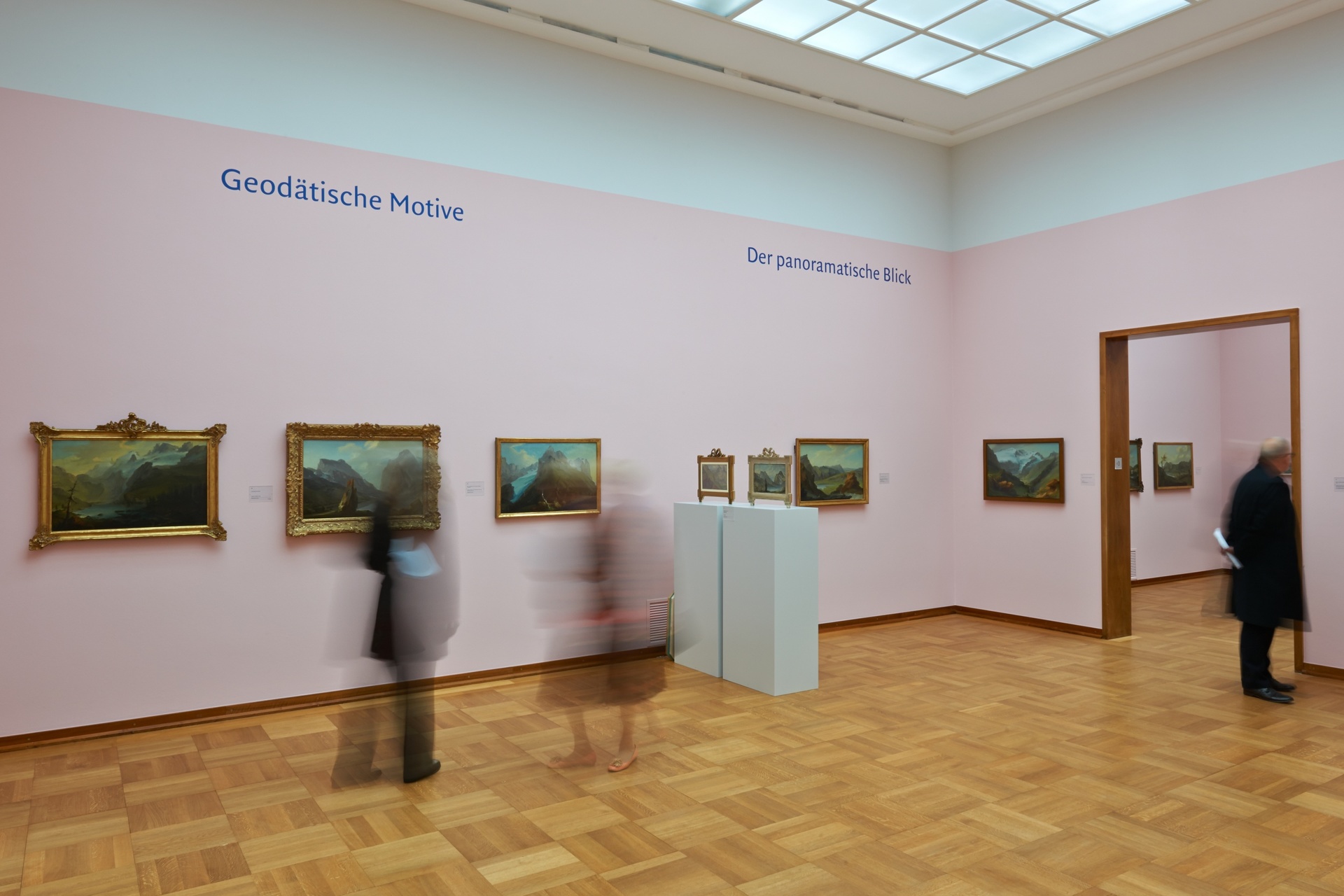Caspar Wolf
and the aesthetic conquest of nature
The Alps as magnificent spectacle of nature — a surprisingly recent opinion. It was only during the course of the 18th century that people began regarding jagged mountain ranges as “sublime” and aesthetically pleasing. The Swiss landscape painter Caspar Wolf (1735–1783) was one of the first to conquer this largely undeveloped Alpine landscape on his extensive treks and made it available as subject matter for artistic treatment. In his galvanizing compositions, massive boulders, thundering mountain torrents, and bizarre glacier formations impede the viewer’s path. The human being, standing in awe, is reduced to a tiny figure before expansive panoramas. Wolf stands well apart from the idyllic Baroque landscapes with his radical formations and as one of the most significant precursors to European romanticism. But the same time, his work breathed the spirit of enlightenment. The exhibition includes 126 works by Caspar Wolf and his contemporaries as well as a selection of recent photographs taken at these respective locations in the Alps. In conjunction with this exhibition, the Kupferstichkabinett at the Kunstmuseum Basel will present highlights from its wealth of drawings and prints by Caspar Wolf.
A fluke of history can be credited for Caspar Wolf ascent from impoverished childhood in Muri as carpenter’s son and moderately successful painter to artist of standing in European art history: the most important pioneer of Alpine painting and one of the most significant precursors to European Romanticism.
The fluke in question is Caspar Wolf’s encounter with the influential Bernese publisher Abraham Wagner (1734–1782). Wagner, one year his senior, had an ambitious project: to issue an encyclopedic publication of the Swiss Alpine landscape complete with illustrations of the highest artistic standard; and more to the point, these illustrations would be worked immediately from nature. The landscape that Wagner had in mind as motif was the rarely travelled and difficult to reach high Alpine region. The idea was to offer viewers a new conception of the Alpine landscape in images of previously unparalleled precision and magnificence. To author the written sections of this publication, Wagner engaged the Bernese priest and eminent natural philosopher Jacob Samuel Wyttenbach. Wolf was to accompany the two men on their extensive treks through the Alpine mountains. His task was to document and depict in paintings these unique encounters with nature.
What resulted was a comprehensive picture cycle of the Swiss Alps. Working in his studio from the nature studies completed on location, Wolf created some 200 paintings of imposing quality that bring together spontaneous observations and highly artistic formulations. Wolf invents astute painterly formulations to depict mountain ranges and glaciers, waterfalls and caves, bridges and raging torrents, lakes and high plateaus, sometimes rendering these in expansive panorama views, sometimes in close, claustrophobic compositions. His paintings include many prominent natural monuments, some no longer existent due to the environmental destruction of recent centuries: hence, the famous “séracs” (pinnacles of glacier ice) of the Lower Grindelwald Glacier, evident in two exceptionally powerful paintings by Wolf, have long since melted, for instance.
Wolf’s paintings can neither be grouped with the vedute, a type painting popular at the time, nor can they be described as explicitly documentary images. Instead, they speak to a more fundamental subject matter: they consider the relationship between the mountain as rational concept and the mountain as sensual perception.
But what was the origin for the remarkable aesthetic assurance with which the artist entered the virginal territory of Alpine painting?
Wolf’s intense engagement with French painting while in Paris in 1770/71 proved to be of central importance. This is vividly demonstrated in the exhibition with works by François Boucher, Claude-Joseph Vernet, Philippe-Jacques de Loutherbourg the Younger, and Hubert Robert. Surprisingly, Wolf profits greatly from his engagement with contemporary marine paintings and their depictions of dramatic storms at sea and shipwrecks.
The exhibition includes 126 works by Caspar Wolf and his contemporaries as well as a selection of recent photographs taken at these respective locations in the Alps.
In conjunction with this exhibition, the Kupferstichkabinett at the Kunstmuseum Basel will present highlights from its wealth of drawings and prints by Caspar Wolf.
Support for the exhibition comes from:
- Peter and Simone Forcart-Staehelin
- L. + Th. La Roche-Foundation
- Foundation for the Kunstmuseum Basel

